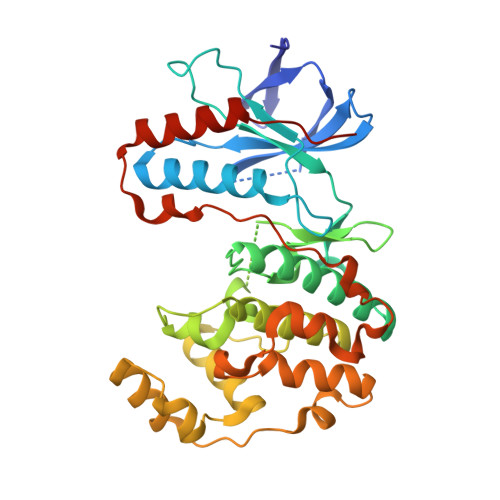Structure-based design, synthesis and crystallization of 2-arylquinazolines as lipid pocket ligands of p38 alpha MAPK.
Buhrmann, M., Wiedemann, B.M., Muller, M.P., Hardick, J., Ecke, M., Rauh, D.(2017) PLoS One 12: e0184627-e0184627
- PubMed: 28892510
- DOI: https://doi.org/10.1371/journal.pone.0184627
- Primary Citation of Related Structures:
5N63, 5N64, 5N65, 5N66, 5N67, 5N68 - PubMed Abstract:
In protein kinase research, identifying and addressing small molecule binding sites other than the highly conserved ATP-pocket are of intense interest because this line of investigation extends our understanding of kinase function beyond the catalytic phosphotransfer. Such alternative binding sites may be involved in altering the activation state through subtle conformational changes, control cellular enzyme localization, or in mediating and disrupting protein-protein interactions. Small organic molecules that target these less conserved regions might serve as tools for chemical biology research and to probe alternative strategies in targeting protein kinases in disease settings. Here, we present the structure-based design and synthesis of a focused library of 2-arylquinazoline derivatives to target the lipophilic C-terminal binding pocket in p38α MAPK, for which a clear biological function has yet to be identified. The interactions of the ligands with p38α MAPK was analyzed by SPR measurements and validated by protein X-ray crystallography.
- Faculty of Chemistry and Chemical Biology, TU Dortmund University, Dortmund, Germany.
Organizational Affiliation:

















